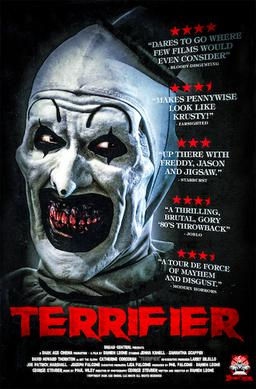Village of the Damned (1960) review
- Jeremy Kelly
- Oct 10, 2021
- 3 min read
10. Village of the Damned (1960)
Directed by: Wolf Rilla
Produced by: Ronald Kinnoch
Screenplay by: Stirling Silliphant, Wolf Rilla, Ronald Kinnoch
Starring: George Sanders, Barbara Shelley, Michael Gwynn

Having kids can be scary, right? Well, try having kids like these. Based on the John Wyndham novel “The Midwich Cuckoos,” this is “Village of the Damned,” starring George Sanders as a professor tasked with pacifying a group of strange children, all born under bizarre circumstances and wielding unpredictable power. It was originally intended as an American film, but religious groups protested the content of the plot, so it was shipped to England, and became a sleeper hit at the box office. It hasn’t really earned classic status over the years, but its strong performances and unsettling atmosphere make it one of the better entries in the “creepy kids” subgenre of horror.
On one ordinary day in the British village of Midwich, the inhabitants suddenly fall unconscious for a roughly four-hour period, which attracts the military’s attention. Everything seems normal afterwards until two months later, when all women of child-bearing age in the area become pregnant. They give birth on the same day, and their children—who age remarkably quickly—all have the same somewhat ghostly appearance and demeanor: sharp eyes, oddly formed platinum blonde hair, well-dressed, polite, intelligent and emotionless. They also communicate telepathically with each other, and can even control others, mainly the ones who show fear and hostility towards them. Professor Gordon Zellaby (Sanders), father of David (Martin Stephens), attempts to teach them separately from the villagers, hoping they can co-exist peacefully; but as tension increases on both sides, are his efforts in vain?

There’s something about the tone of this movie that I find truly unique; we’re meant to view these children as antagonistic, yet there’s a delicate balance in whether or not their conduct is innocent or malicious. We never find out their real origins, but their reasoning and logic still have complexity in an understandably childish way. They’re never the aggressors; at the end of the day, they want to be left to their own devices, but they also don’t grasp the concept of right and wrong, and it’s this perfect storm of ignorance where the danger lies. But with that said, they do succeed in getting under your skin in how they talk and especially the way their eyes glow; it’s a simple effect where they just create animated overlays of a bright white iris, but it does the job.
Last week, I spoke favorably of Sanders in his role of the unscrupulous Lord Henry Wotton in “The Picture of Dorian Gray,” and here he is in the starring role, showcasing his trademark smooth sophistication; this was late in his career, but he hadn’t yet lost an ounce of screen presence, bringing outstanding weight to Zellaby, a main of patience and class. I also like Michael Gwynn—a Hammer Horror veteran—as Zellaby’s brother-in-law Alan, a British Army officer; in general, the performances are solid, but most of the characters serve little purpose, despite there being plenty of build-up and intrigue in the first act. I admire the juxtaposition when the pregnancies are discovered; Gordon and his wife Anthea (Barbara Shelley) are overjoyed, while other parties are shocked or suspicious of possible affairs. But after the babies are born, they’re all mostly sidelined, Anthea in particular; and she’s played by another Hammer regular Barbara Shelley, who’s great in the role, but she isn’t given much to do other than react occasionally, which is pretty disappointing for me.

In fact, it sort of relates to a main problem of the movie: its unwillingness to really push the envelope with its scale. It has the pieces of a bigger story by showing scenes of the military conflict and even references to other colonies of these children, but they just end up as window dressing. Maybe the goal was to keep the setting humble, but I think it needed more development from the supporting cast and to keep this incident isolated in order for it to work; otherwise, go bigger with the ideas. So the pacing once the children are grown becomes pretty rushed; I feel like I’m nitpicking, but this really could’ve been an evocative and tragic story, while only traces of those qualities remain.
However, “Village of the Damned” still works as a smart, well-acted and engaging movie; I just think it could’ve done more with its concept. Nevertheless, its imagery has made an impact on pop culture; there was a sequel called “Children of the Damned,” which had a completely different tone, a 1995 remake directed by John Carpenter, and it seemed to inspire the Ira Levin novel “The Stepford Wives” as well as the Marvel Comics characters The Stepford Cuckoos. In the right setting, a complete lack of emotion in people can be disturbing, and when it’s in children, potentially moreso; so if you’re up for that kind of thing, give this one a watch.
My rating: 8/10





Comments